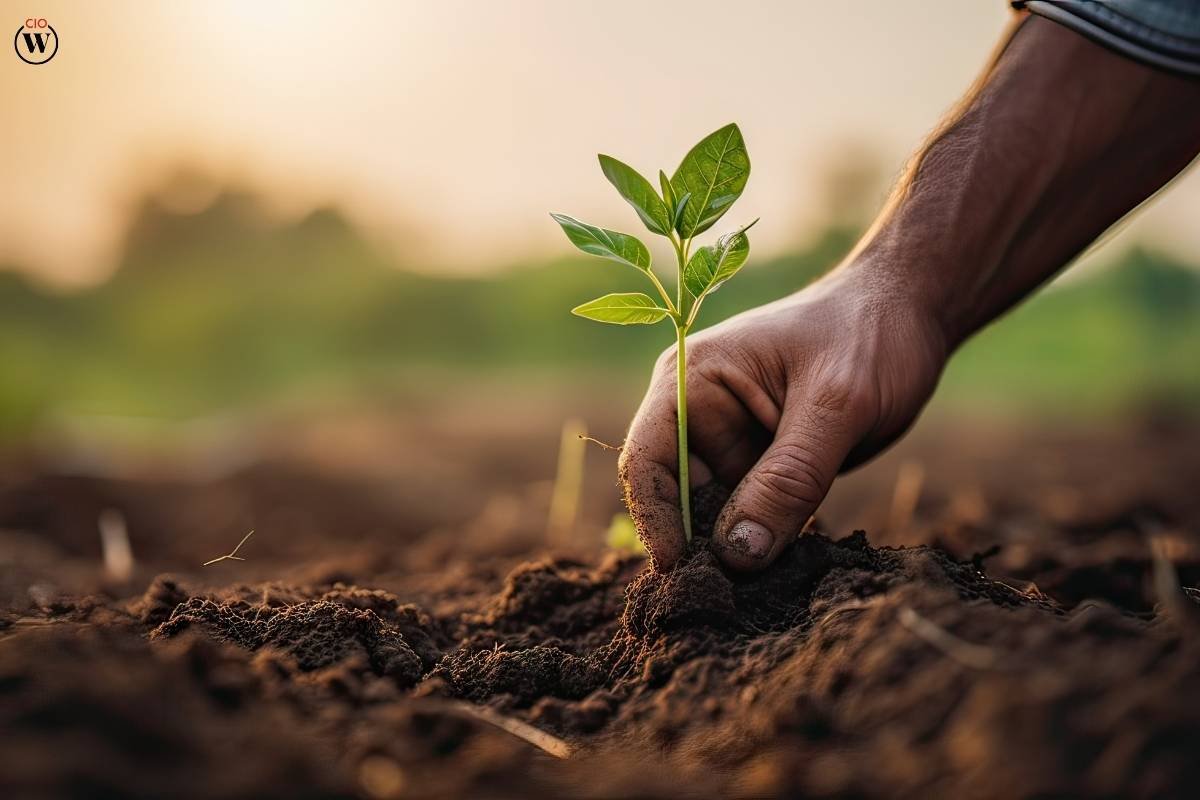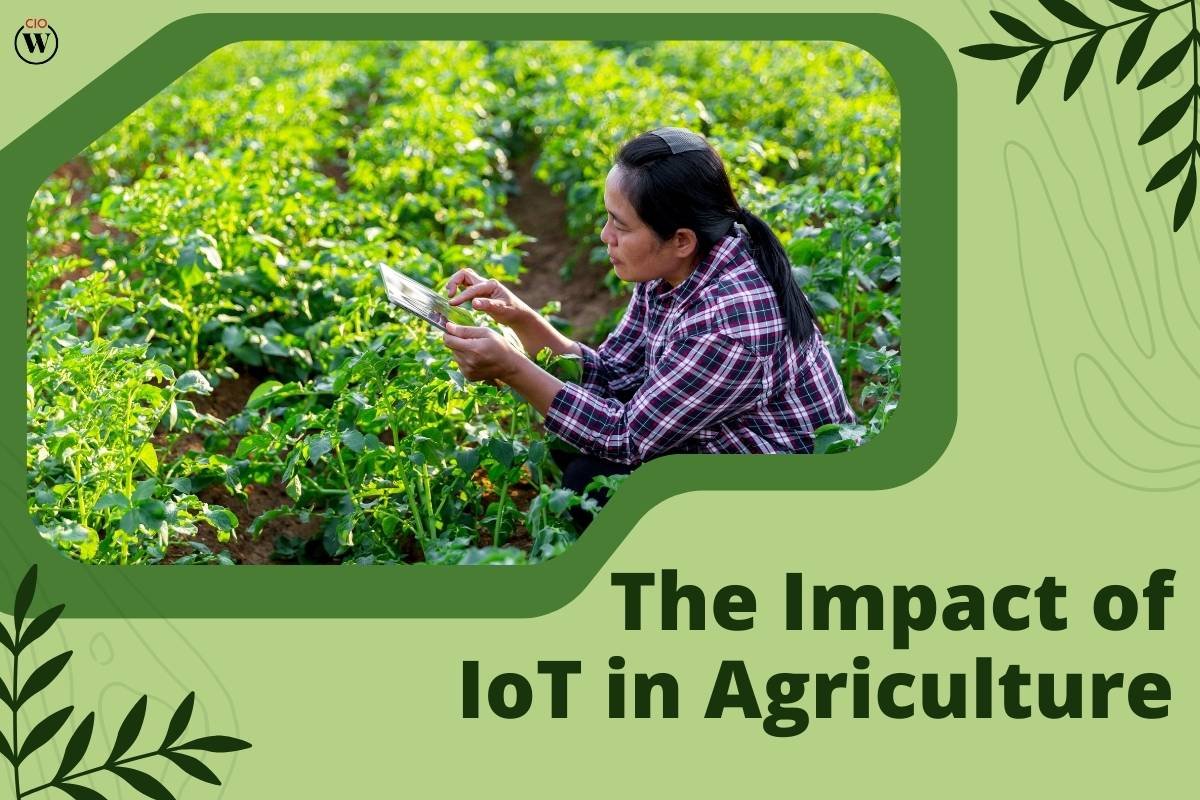In the ever-evolving landscape of agriculture, technology has become a catalyst for transformative change. Among the myriad technological advancements, the Internet of Things (IoT) has emerged as a game-changer, ushering in a new era of precision farming and sustainable agricultural practices. This article explores the profound impact of IoT in agriculture, delving into its applications, benefits, and the potential it holds for the future.
Understanding IoT in Agriculture
The term encapsulates the integration of smart devices, sensors, and data analytics to enhance farming operations. This interconnected network of devices enables farmers to monitor and manage various aspects of their agricultural processes remotely. From soil health and crop conditions to livestock monitoring and equipment efficiency, IoT in agriculture offers a comprehensive solution for modern-day farming challenges.
Applications of IoT in Agriculture
1. Precision Farming:
Precision farming, enabled by IoT, involves the use of sensors to gather real-time data on soil moisture, temperature, and nutrient levels. This data is then analyzed to make informed decisions regarding irrigation, fertilization, and pest control. By optimizing resource usage, precision farming increases crop yields while minimizing environmental impact.
2. Livestock Monitoring:
IoT devices such as smart collars and tags equipped with sensors allow farmers to monitor the health and behavior of livestock. This real-time information helps in early detection of diseases, tracking animal movements, and optimizing feeding schedules, leading to improved overall animal welfare and increased productivity.
3. Smart Irrigation:

Traditional irrigation methods often result in inefficient water usage. IoT-powered smart irrigation systems utilize sensors to measure soil moisture levels and weather conditions, enabling precise and automated irrigation. This not only conserves water but also contributes to better crop health and increased yields.
4. Crop Monitoring:
IoT devices like drones equipped with cameras and sensors enable farmers to monitor crop health and growth patterns. By analyzing this data, farmers can identify areas requiring attention, such as pest infestations or nutrient deficiencies, and take timely corrective measures.
5. Supply Chain Optimization:
IoT plays a crucial role in optimizing the agricultural supply chain. From tracking the movement of goods to monitoring storage conditions, IoT sensors provide real-time data that helps prevent spoilage, reduce waste, and ensure the timely delivery of produce to markets.
Benefits of IoT in Agriculture
1. Increased Efficiency:
The implementation of IoT in agriculture streamlines various processes, reducing the need for manual labor and minimizing resource wastage. This increased efficiency translates into higher productivity and cost savings for farmers.
2. Data-Driven Decision Making:
IoT devices generate vast amounts of data, empowering farmers with valuable insights into their operations. Data-driven decision-making allows for proactive problem-solving, optimizing resource allocation, and improving overall farm management.
3. Sustainable Practices:

By precisely managing resources such as water, fertilizers, and pesticides, IoT in agriculture promotes sustainable farming practices. This not only reduces the environmental impact but also addresses the growing need for more eco-friendly agricultural methods.
4. Improved Crop Quality:
With real-time monitoring of crop conditions, farmers can intervene promptly to address issues affecting crop quality. This results in a higher quality of produce, meeting market standards and consumer expectations.
5. Cost Savings:
The automation and optimization facilitated by IoT in agriculture lead to significant cost savings. Whether through reduced water usage, minimized use of chemicals, or streamlined logistics, farmers benefit financially from adopting IoT technologies.
Challenges and Considerations
While IoT in agriculture holds tremendous promise, its implementation is not without challenges. The initial cost of adopting IoT technologies, connectivity issues in remote areas, and concerns related to data security and privacy are some of the hurdles that farmers may face. It is crucial for stakeholders, including governments, technology providers, and farmers, to collaborate in addressing these challenges and ensuring the widespread adoption of IoT in agriculture.
Future Outlook

The future of agriculture lies in the continued integration and advancement of IoT technologies. As connectivity improves and costs decrease, more farmers worldwide will have access to these transformative tools. The ongoing development of AI and machine learning algorithms will further enhance the capabilities of IoT devices, making them even more adept at predicting and preventing issues in real time.
Conclusion
“IoT in Agriculture” represents a paradigm shift in the way we approach farming. By harnessing the power of interconnected devices and data analytics, farmers can optimize their operations, increase yields, and contribute to a more sustainable and efficient agricultural sector. As the world grapples with the challenges of feeding a growing population, embracing IoT in agriculture is not just an option but a necessity for securing the future of food production. The keyword “IoT in Agriculture” serves as a beacon, guiding the agricultural community toward a more connected, efficient, and sustainable future.
Frequently Asked Questions (FAQs) about IoT in Agriculture:
- What is IoT in Agriculture, and how does it work?
Answer: IoT in Agriculture refers to the integration of smart devices and sensors to collect and analyze data for better farm management. These devices, ranging from soil sensors to drones, gather real-time information on various aspects such as soil health, crop conditions, and livestock behavior. This data is then processed to make informed decisions, optimizing agricultural processes and resource usage.
- How can IoT benefit farmers in terms of cost savings?
Answer: IoT in Agriculture offers cost savings through increased efficiency and resource optimization. Precision farming, enabled by IoT, allows farmers to use resources such as water, fertilizers, and pesticides more precisely. By automating tasks and making data-driven decisions, farmers can reduce manual labor, minimize resource wastage, and ultimately save on operational costs.
- What challenges do farmers face in adopting IoT technologies in agriculture?
Answer: Farmers may encounter challenges in the adoption of IoT technologies, including the initial cost of implementation, limited connectivity in remote areas, and concerns related to data security and privacy. Overcoming these challenges requires collaboration between governments, technology providers, and farmers to ensure widespread access and address these issues effectively.
- How does IoT contribute to sustainable agriculture practices?
Answer: IoT promotes sustainable agriculture by enabling precise resource management. Smart irrigation systems, for example, use sensors to measure soil moisture levels and weather conditions, allowing for optimized water usage. Additionally, IoT devices aid in monitoring and controlling the use of fertilizers and pesticides, reducing environmental impact and fostering more eco-friendly farming practices.
- What is the future outlook for IoT in agriculture, and how will it evolve?
Answer: The future of IoT in agriculture looks promising, with ongoing advancements in technology and connectivity. As costs decrease and accessibility improves, more farmers will adopt IoT solutions. The integration of artificial intelligence and machine learning will further enhance the capabilities of IoT devices, enabling them to provide more sophisticated insights and predictions for improved farm management.
Also read: 10 Best AI-Powered Agriculture Projects









